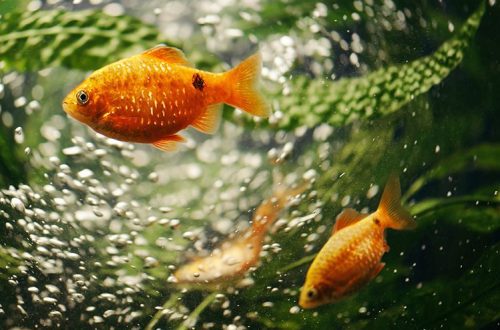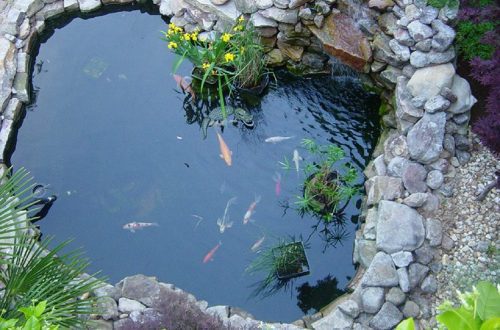
What kind of fish to buy in the aquarium?
How to populate an aquarium so that the fish do not fight with each other. Easy scheme and examples of settling aquariums.
There are countless fish in the pet store: all kinds of shapes, sizes and colors. They flit by the glass in huge flocks, attracting attention. It’s hard to stop at just one. Eyes run up and I want to buy all at once. But it should be remembered that this is one of the most common and fatal mistakes of a novice aquarist.
To avoid overpopulation and aggression of the inhabitants of the aquarium to each other, you need to carefully select the fish.
There are certain rules, the observance of which depends on the world in the aquarium. Let’s take a look at them in more detail.
1. The volume of the aquarium
First of all, you should start from the volume of your aquarium. The larger it is, the more fish you can keep. Each species has two volume limits.
The minimum volume in which this species can be kept. Sometimes even small fish require an aquarium of impressive volumes. This may be due to various reasons. Some fish are extremely territorial, and they need a certain area to settle, like cichlids, for example. Others are very mobile and need a lot of space for swimming – these are, for example, barbs.
Stocking density restrictions. This is the free volume for each individual. It may depend on the species, but the basic scheme is as follows: 1 liter per 1 cm of the length of an adult fish, including the tail. It is important to consider the size of an adult fish. The store may have young individuals that grow 5-10 or more times. Be sure to specify the maximum size of the fish.
The minimum volume for keeping swordtails is 50 liters, and the landing density is one adult per 10 liters of water. The average size of an adult fish is about 10 cm. Therefore, up to six adult swordtails can be planted in a 60-liter AquaArt aquarium.
The minimum volume for a Siamese cockerel is 3 liters, but at the same time, several males cannot be kept in one aquarium due to bright intraspecific aggression. For a mixed aquarium or for keeping a male and females together, the volume of the aquarium must be at least 50 liters. The 6,8 liter Tetra Cascade Globe is ideal for keeping one cockerel fish.
You can increase stocking density by picking up inhabitants living in different layers of water. For example, Endler’s guppies will occupy mainly the upper layers, neons – the middle ones, and catfish-corridors – the lower ones.
2. Which fish are compatible
What kind of fish to buy in the aquarium so that they do not conflict with each other? When choosing, you need to consider the compatibility of fish with representatives of their own species and with individuals of other species. What to pay attention to?
intraspecific aggression. This is aggressive behavior towards individuals of their own species. More common in males. The most striking example is the Siamese cockerel. Male Siamese bettas should never be kept in the same aquarium. Intraspecific aggression can also be observed in algae eaters and gyrinocheilus, although it is less pronounced and usually consists in the fact that the weak are simply not allowed to feed. With a lack of volume is also often observed in cichlids. Sufficient volume and uniform distribution of food over the area of the aquarium solves the problem of aggression.
Interspecies aggression. This is aggressive behavior towards individuals of another species. The most common causes are differences in size and temperament. Large fish will eat anything they can put in their mouths, even if they are herbivores, so you should choose occupants of about the same size. Active fish often ruffle their fins and bite less agile cohabitants. So, for example, barbs are often considered predators for their aggressive games, although they are predominantly herbivorous fish.
Different speed of eating food. May cause some of the fish in the aquarium to remain hungry. This can cause exhaustion and the development of dangerous diseases. For example, discus and lalius are known for their slowness. You should not add active fish to them, which will not give them the opportunity to eat. Or it is necessary to carefully monitor that food reaches all the inhabitants.
If overly active residents do not allow catfish to eat by eating their pills, throw the pill after turning off the lights in the thickets or scenery. Most of the fish fall asleep by that time, and the catfish, on the contrary, become more active.
3. Conditions of detention
Each species has its own content requirements. It is necessary to familiarize yourself with them before purchasing fish. Main criteria:
The presence of shelters. Especially important in aquariums with territorial fish such as cichlids. The number of shelters in such aquariums should exceed the number of fish.
presence of living plants. Usually not so critical for fish, but a prerequisite for keeping shrimp.
Temperature, pH and hardness parameters suitable for all inhabitants. It is worth familiarizing yourself with the recommended conditions for keeping all fish in advance.

Armed with new knowledge, let’s try to put them into practice and find tenants for a tropical aquarium of 80 liters. Let’s take several fish living in different layers, about the same size and the same activity:
Danio-rerio for the top layer.
Tetra rhodostomus for medium.
Corydoras speckled and ancistrus for the lower.
Now let’s check if the volume of our aquarium is suitable for these fish and how many fish we can populate in it.
For all types, the minimum volume requirement is about 50 liters. We occupy the layers evenly, so we can populate the fish somewhat denser than the average values (this density can be increased even more if we put an external filter, for example, Tetra EX 400 Plus). Eight rhodostomus and eight danios, whose adult size is about 5 cm, require a volume of 80 liters (5×8 + 5×8 = 80). Let’s add one ancistrus and a family of four speckled catfish to the bottom. There are not many of them and they will occupy the bottom layer, so we will plant them a little over the recommended density.
Next, we will clarify the requirements for conditions of detention and compatibility. All fish love soft, slightly acidic water, the temperature for all inhabitants should be between 24-27 ° C. For catfish, shelters are required.
All inhabitants are non-aggressive, active, have approximately equal adult size. Unless intraspecific aggression is sometimes observed in ancistrus, but in our aquarium there is only one ancistrus and there is no one to quarrel with. Everything converges! Before buying fish, remember.
Focus on these simple rules when buying fish. If you collect an aquarium according to this scheme and properly care for it, the fish will live peacefully.





